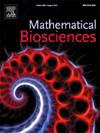竞争条件下多种觅食策略的出现。
IF 1.8
4区 数学
Q2 BIOLOGY
引用次数: 0
摘要
觅食策略是由与环境的相互作用形成的,并在代谢约束下进化。在没有进化的情况下,对孤立和竞争生物的最佳策略进行了广泛的研究。对于代谢限制如何影响生物体探测和获取食物的能力的进化,人们知之甚少。为了解决这个问题,我们引入了一个基于最小智能体的模型,该模型描述了在拥挤环境中成功觅食的两个表型属性的共同进化:运动速度和感知敏锐度。在竞争条件下,更高的速度和敏锐度使觅食成功率更高,但代谢成本更高。我们推导出单个agent的最优觅食策略,并证明该策略对于群体中的觅食者不再是最优的。我们发现突变和选择可以导致两种策略的共存:一种是具有高灵敏度和高速度的代谢成本策略,另一种是代谢成本低的策略。一般来说,在进化的种群中,速度和敏锐度是共同变化的。因此,即使在代谢限制下,也不能保证在代谢昂贵的性状之间进行权衡。本文章由计算机程序翻译,如有差异,请以英文原文为准。
Emergence of multiple foraging strategies under competition
Foraging strategies are shaped by interactions with the environment, and evolve under metabolic constraints. Optimal strategies for isolated and competing organisms have been studied extensively in the absence of evolution. Much less is understood about how metabolic constraints shape the evolution of an organism’s ability to detect and reach food. To address this question, we introduce a minimal agent-based model of the coevolution of two phenotypic attributes critical for successful foraging in crowded environments: movement speed and perceptual acuity. Under competition higher speed and acuity lead to better foraging success, but at higher metabolic cost. We derive the optimal foraging strategy for a single agent, and show that this strategy is no longer optimal for foragers in a group. We show that mutation and selection can lead to the coexistence of two strategies: A metabolically costly strategy with high acuity and velocity, and a metabolically cheap strategy. Generally, in evolving populations speed and acuity co-vary. Therefore, even under metabolic constraints, trade-offs between metabolically expensive traits are not guaranteed.
求助全文
通过发布文献求助,成功后即可免费获取论文全文。
去求助
来源期刊

Mathematical Biosciences
生物-生物学
CiteScore
7.50
自引率
2.30%
发文量
67
审稿时长
18 days
期刊介绍:
Mathematical Biosciences publishes work providing new concepts or new understanding of biological systems using mathematical models, or methodological articles likely to find application to multiple biological systems. Papers are expected to present a major research finding of broad significance for the biological sciences, or mathematical biology. Mathematical Biosciences welcomes original research articles, letters, reviews and perspectives.
 求助内容:
求助内容: 应助结果提醒方式:
应助结果提醒方式:


